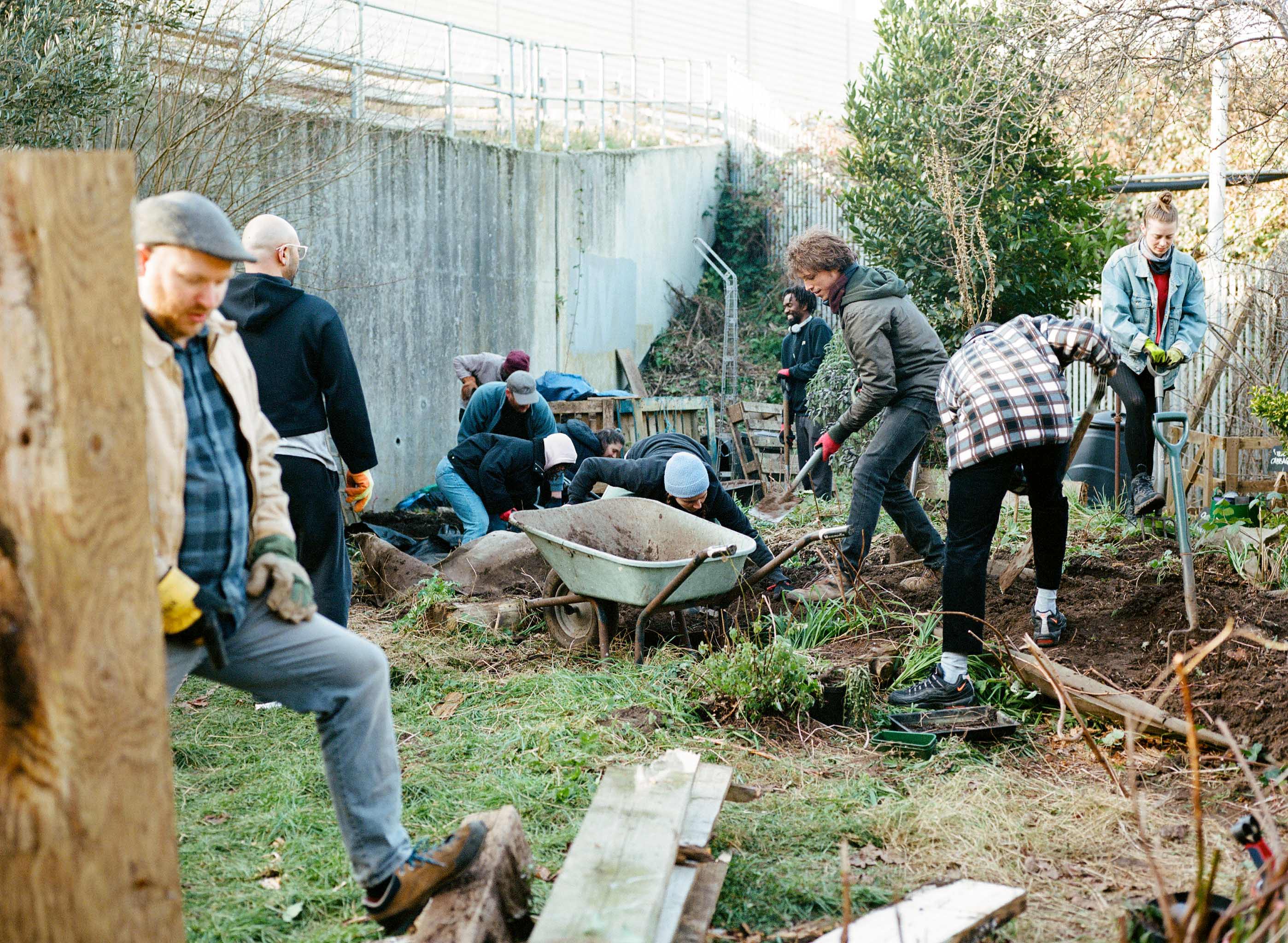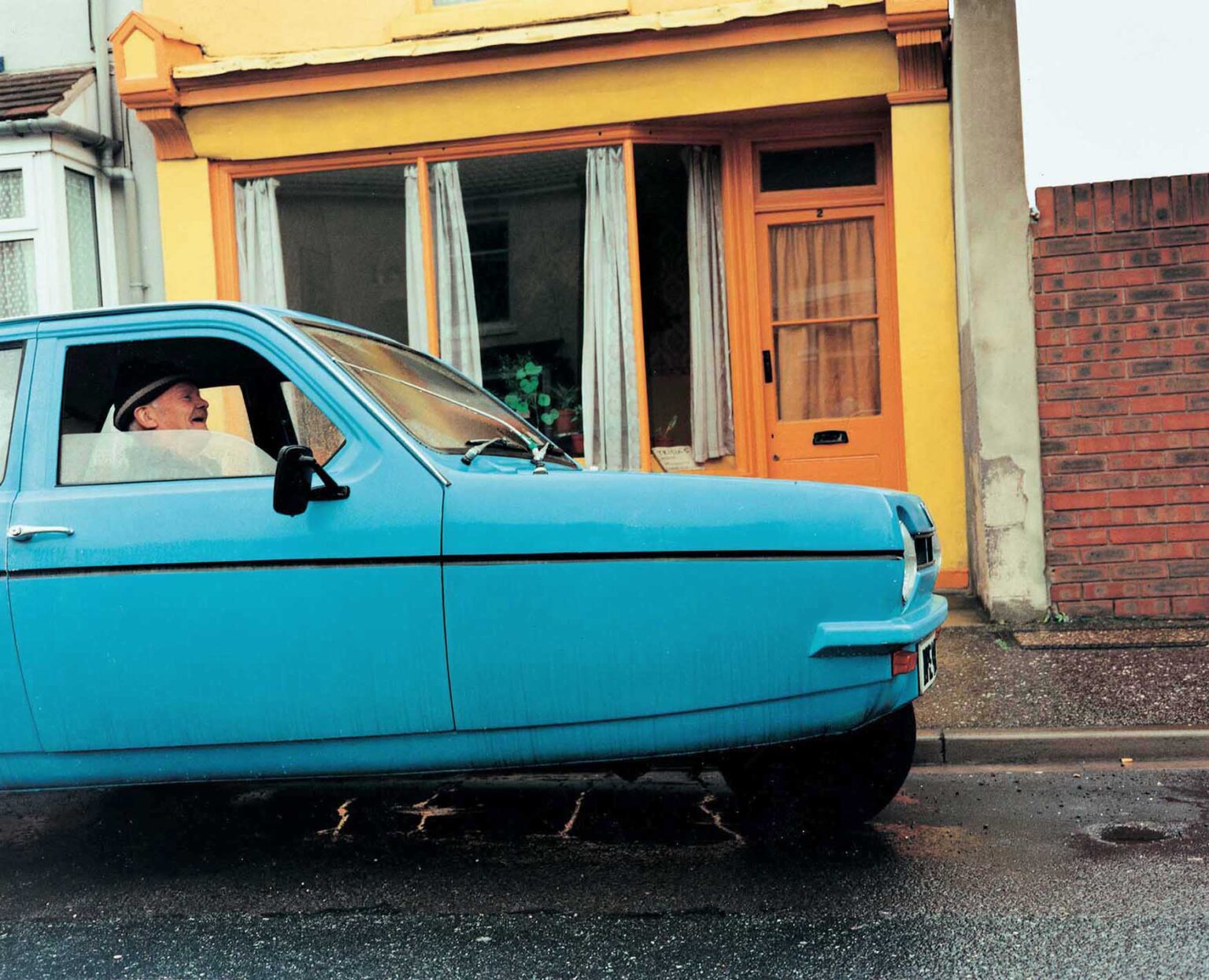With a body of work consistently built over fifteen years, architect and photographer Fred Guillaud’s images of urban landscapes are a beautiful cocktail between documentary, street and architectural. Photographing a building with the same sensitivity as a portrait of a family member, simultaneously Guillaud’s approach and use of people within his images, taken with an objectivity used for architecture create stunning composed colours and perspectives. In this interview we speak with Guillaud about how his career as an architect develops his work, living in Barcelona and documenting what the architect cannot control.

To start, what inspired you to start photographing?
Well I can’t actually say what really inspired me to start shooting. Let’s say that my first step was during my architectural studies, as a need to cover field investigations, or to shoot buildings.
What are your main inspirations? I read that you are fan of the first American colourist, such as Stephen Shore and William Eggleston what is it about their work that inspires your own?
I guess this is my second step. I’m an autodidact so i was mainly following my instinct recording both my daily life and urban scenes. One day i came across the book “Uncommon places” from Stephen Shore. It has been my first “photographic shock”… I probably stood one hour staring at the pictures. I suddenly found a sense and an explanation to the pictures i was taking, both on the modus operandi and the topics. In a word, from Eggleston i obviously keep in mind his “i am at war with the obvious”, from Shore his capacity to reinvent himself constantly.
You have been living and photographing in Barcelona for a little over 15 years, what do you love most about it?
First of all Barcelona is a very photogenic city. There is a great juxtaposition of old neighbourhood and modern architecture, local people and masses of tourists. There is also a great variation of lights depending on the seasons. You can just get lost in different parts of the city to enjoy very different and contrasted situations.
When looking at your work, it seems you have an interest in colour, patterns and symmetry, is this a link to your career as an architect, would you say that it influences what, and the way you photograph?
As a former architect i cannot deny that i mainly focus my photographic work on man-built environments. As an architect i am involved in the organisation and the construction of the spaces we live in, but as a photographer i tend to “de-construct” those spaces by focusing on the way people live and use in their environment. I like to document what the architects cannot control, what escapes to them : the evolution of a building with time, the miss-uses, unexpected matches…
On your website you have listed your photography in a unique way, it is representative of the daily diary in which your work has been described, has this always been the way you see your photography, as a visual diary?
Yes. Since i live in Barcelona i started to use disposable cameras for commodity in order to always carry it with me. I was shooting without any purpose or concrete project. So i used to scan some selected pictures and i organised them as a diary, with a chronological number for each one. Time is passing, the cameras I use to shoot are changing, but i will still keep doing my diary…
Do you see yourself as an artist?
Tricky question…
I guess we have to dissociate the process from the result. I cannot say my aim to shoot is artistic. I actually don’t tribute as an artist and i don’t focus on my “modus operandi” as an art work. I take pictures to document the way i see our environment. But on the same time you can obviously embrace the result as an artistic work since documentary photography is fully accepted as an art. I see myself as a strange “cocktail”, in between documentary photography, street photography, architectural photography. So if I look forward I should not call myself “artist”, if I look back, I probably could describe my work as artistic…

Do you have a favourite image?
I have a preference for pictures that include people, they look more complete to me. They give scale and movement to the scenes i shoot. Maybe also because it’s always more challenging to get a perfect shot with something so unpredictable such as people. I don’t stay on one place waiting for the “decisive moment” to appear. When i walk around I only take one picture of the scene that is appearing to my eye. So i feel extremely lucky when a figure is here, balancing the picture between construction and life.
On your site from 2004 to 2015 you have documented daily life, have you seen a natural progression or change in the way you photograph over the years when you look back at your work?
Yes, of course. As I told you I started to shoot “consciously” for 15 years now. But since then I have been reading a lot about photography, I have discovered a lot of great photographers, I have studied their work, I have spent hours discussing photography with my friends. Even though the themes are always the same, I guess I was slowly looking for sharper images. Even if every pictures is part of a narration, they can live by themselves now, they have a stronger autonomy than 10 years ago. We could probably call this maturity…
Because of your diary style of showcasing your images do you feel that you have a personal retrospective toward your work, an almost personal narrative?
I really take pictures to build a personal diary. I try to document our way of life, from both an intimate and more generic vision. I like to take picture of a building with the same sensitivity when i take a portrait of a family member. And at the same time I take portraits with a kind of objectivity I use for architecture… So as time goes by and I watch back I can see my people growing, getting older, I can see the city evolving, in mutation and disappearing in some cases. I have to admit that I sometime have some vertigo when I watch back.
You exhibited your work at ENSAG, how did you go about showcasing the images, what was the thought process behind it?
The context of this exhibition was an architectural competition in China where 2 of my students were implicated. A one week trip in Shenzhen was organised to celebrate the prize they won with their proposal. I was taking pictures during this week to document this event. The purpose of the exhibition was to show both the project and a feedback on this trip. So for this last part we decided to organise my pictures as snapshots sticked directly on the wall, giving different scales of lectures, but embracing it as a whole.











